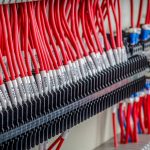BMS Installation
Our electrical installation teams provide complete supervision of the power. control and network installation, fully complying with the regulations of the Institute of Electrical Engineers. We commission control loops using calibrated test equipment to match the plant response.
Why us?
- Nationwide Installers of BMS & BEMS including London.
- Every one of our BMS engineers is manufacturer trained, highly skilled and experienced to complete your building management system (BMS) installation project on-time and on budget.
- Initial Consultations – ensures confidence of every BMS installation we carry out.
- A BMS Installation Company You Can Rely On – Our BMS Installation contractors provide a bespoke service that can be suited to your requirements.
- Energy Efficient – From day one of BMS installation, we provide energy efficiency surveys.















